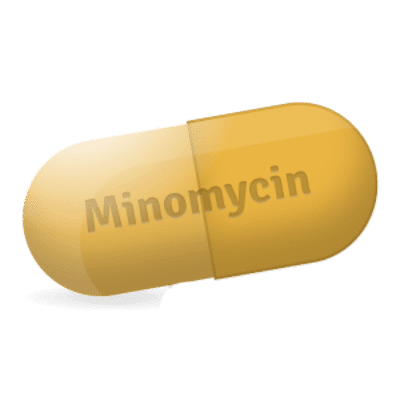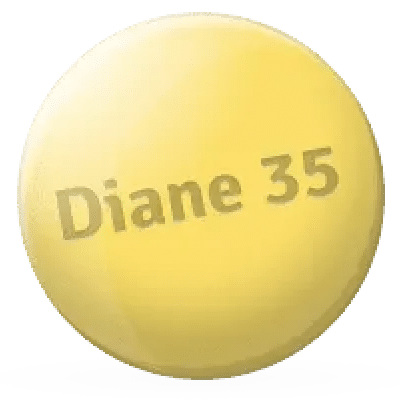After just a few days of taking Minomycin, I noticed significant changes. My skin became less inflamed, and it felt like the inflammatory processes were starting to subside. I had tried other antibiotics many times before, but Minomycin was the most effective in my case.

Minomycin
Active ingredients: Minocycline- Quality products
- Support 24/7
- Fast delivery
What is it?
Minomycin is an antibiotic from the tetracycline group, the main active ingredient of which is minocycline. Its main task is to fight various bacterial infections affecting the respiratory tract, skin, genitourinary system and eyes. Minocycline acts by suppressing the synthesis of proteins in bacterial cells, which prevents their reproduction and helps to fight the infection. The drug covers a wide range of bacteria, but before starting treatment, sensitivity tests should be carried out to ensure its appropriateness. It is very important to consult a doctor to assess the indications and possible contraindications before starting a course of treatment with Minomycin.
Composition
The composition of Minomycin includes the active substance minocycline in the form of hydrochloride. This is the main component that provides the antibacterial effect of the drug, effectively blocking the ability of bacteria to multiply and cause infections. In addition, the composition includes excipients that help stabilize the formula of the drug and ensure ease of use. Typically, these are components such as magnesium stearate, starch and dyes that give the capsules a certain color.
- Minocycline hydrochloride
- Magnesium stearate
- Starch
- Dyes
These components rarely cause side effects, but it is important to check the list for individual intolerance.
How to use?
Correct use of Minomycin is an important aspect to achieve a therapeutic effect and prevent the development of resistance in bacteria. Capsules should be taken orally with plenty of water. This helps to avoid irritation of the esophagus. For optimal absorption of the drug, it is recommended to avoid horizontal position for 30 minutes after taking. The ideal time for use is 1-2 hours after a meal.
- Take capsules orally with enough water
- Avoid horizontal position for 30 minutes after taking
- The optimal time for taking is 1-2 hours after a meal
How does it work?
Minomycin works thanks to its active ingredient minocycline, which belongs to the group of tetracycline antibiotics. It has a bacteriostatic effect, which means stopping the reproduction of pathogenic microorganisms by disrupting their protein synthesis. This leads to a cessation of bacterial growth, after which the bodys immune system completes their elimination. The drug is effective against a wide range of bacteria, including both gram-positive and gram-negative species. This makes it a universal remedy for the treatment of infections such as acne, respiratory tract inflammation, genitourinary infections, and others. Minocycline also demonstrates high resistance to enzyme destruction, which ensures long-term action after administration. Minomycin acts systemically, spreading through the tissues and fluids of the body, which allows you to effectively fight infections in various localizations.
Indications
Minomycin has a broad spectrum of indications due to its broad antibacterial activity. This makes the drug valuable in the treatment of various infectious diseases caused by susceptible microorganisms. Minomycin is prescribed for the treatment of respiratory tract infections such as bronchitis or pneumonia caused by bacteria resistant to other antibiotics. The drug is also effective in skin infections, including severe forms of acne. It is used to treat genitourinary infections, eye infections, and some forms of bacterial meningitis.
- Respiratory infections such as bronchitis or pneumonia
- Skin infections, including severe forms of acne
- Genitourinary infections
- Eye infections
- Some forms of bacterial meningitis
Contraindications
Despite the effectiveness of Minomycin, its use has certain limitations. The drug is contraindicated in patients with an allergy to minocycline or other tetracycline antibiotics. Minomycin should be prescribed with caution to people with severe liver or kidney disease, as this may affect the metabolism and excretion of the drug. Minomycin is contraindicated in children under 8 years of age due to the risk of damage to tooth enamel and bones.
- Allergy to minocycline or other tetracycline antibiotics
- Severe liver or kidney disease
- Age under 8 years
- Pregnancy and lactation
The drug is also not recommended for pregnant and lactating women, as it may adversely affect the development of the fetus or child.
Side effects
As with any medication, the use of Minomycin may cause side effects. This aspect of treatment should be carefully considered and patients are advised to report any unusual symptoms to their doctor. Common side effects are usually minimal and temporary, but it is still important to be aware of possible reactions. Possible side effects may include digestive upset, which is one of the most common complaints with antibiotic treatment. A number of patients may experience headache or dizziness, which usually resolves after a while and does not require discontinuing the drug.
- Digestive upset
- Headache
- Dizziness
- Tooth discoloration in children
- Potential allergic reactions
Very rarely, more serious allergic reactions may occur, such as rash, itching or shortness of breath, requiring immediate medical attention.
Frequently asked questions
Minomycin Reviews and Experiences
After a long battle with a respiratory infection, Minomycin became a much-needed solution. The symptoms began to subside already on the second day of taking it, and I felt significant relief. I did not notice any side effects, which also gives me confidence in choosing this drug.
Minomycin literally saved me from constant skin problems. After the course of treatment, my acne was significantly reduced, and I felt confident. Of course, I followed the doctors instructions and took the capsules strictly according to the instructions, but the result exceeded expectations.









